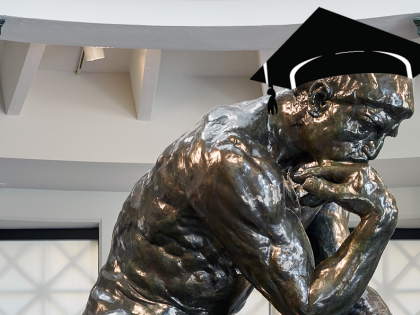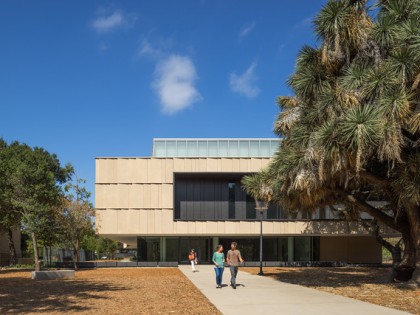Stanford Arts District museums offer plenty for a world-class cultural staycation
Old favorites, new acquisitions offer something for every age, taste
Share to TwitterShare to PrintShare to More
With gas prices soaring and airline travel not so fun anymore, it might be a good time to consider cultural offerings closer to home. The Stanford campus is home to two world-class museums and if COVID-19 has kept you from visiting them recently, you may be pleasantly surprised at the varied — and thought-provoking — exhibitions currently on view. A recent visit to both the Anderson Collection and the Cantor Arts Center revealed both old favorites and new acquisitions that offer something for every age and taste.
Start at the Anderson Collection, a bespoke museum that houses the extraordinary collection of the late Harry W. “Hunk” and Mary Margaret “Moo” Anderson. The result of a mutually beneficial relationship between the local couple and the university, the Anderson holds a world-renowned collection of post-World War II American art that once graced the halls of the Saga Corporation, (Harry Anderson was one of the founders) and later, the Quadrus office complex on Sand Hill Road in Menlo Park. For those who are unfamiliar with the background of this collection and how it came to Stanford, it’s worthwhile to pop into the comfortably appointed library. Here, the Andersons’ private library of art books (used to assist them in their collecting) and a video interview with the couple can be found. The second floor is where the initial 2014 gift of 121 paintings and sculptures, as well as more recent acquisitions, are installed.
The museum was closed for a period in 2021 while building maintenance was undertaken; it was also an opportunity to totally reinstall the permanent collection. In place of a didactic arrangement of pieces that grouped objects by themes (California Funk, Bay Area Figuration, Abstract Expressionism, etc.) the current installation is a delightful juxtaposition of like and unlike art works.
In other words, this placement is more a reflection of how the Andersons lived with art in their home. Large-scale abstract paintings resided comfortably next to English antiques and sculptures by California artists like Robert Arneson and David Gilhooly. Yes, one of the most famous examples of Jackson Pollock’s “drip period,” “Lucifer,” is still in the largest gallery but it has now been joined with more recent gifts from the Andersons and others. “Totem Lesson I” (also by Pollock) and “Gansevoort Street” by Willem de Kooning were given by Mary Margaret. Anderson prior to her death. Another important Anderson gift were prints and a stunning marble bust, “Makida III” by Manuel Neri. These and more contemporary works like Mary Weatherford’s 2017 “Black Painting,” which has a swath of neon tubing across the surface of the canvas, assure that the museum remains a dynamic learning experience, no matter how often one visits.
While it’s always interesting to see the new, it is also fun to see familiar works in new places. The bright and upbeat painting, “The Beaubourg” by Sam Francis, used to be tucked away in the lower- level hallway. Now on view upstairs, it has pride of place on a main wall. Not far from it is a special grouping of works by Stanford alumnus Richard Diebenkorn. The Andersons were good friends with the artist and the works here reflect his ability to capture light and landscape in an innovative, abstracted manner. “Ocean Park #60” is gorgeous, blue and tranquil — perhaps like the Southern California neighborhood that inspired it. This painting alone is worth a visit.






